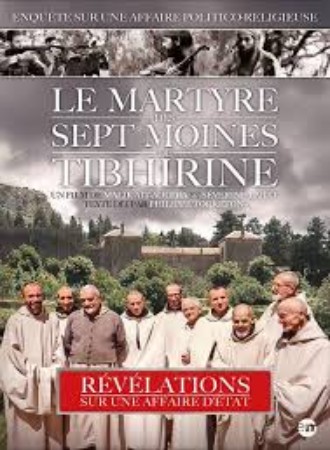
The Martyrdom of the Seven Monks of Tibhirine 2014
Distributed by Ruth Diskin Films Ltd., P.O.Box 7153, Jerusalem, 91071, ISRAEL
Produced by Khaled Senoussi.
Directed by Malik Ait-Aoudia & Severine Labat.
DVD , color, 74 min.
High School - General Adult
Catholicism, Islam, Political Science, War Crimes
Date Entered: 09/01/2015
Reviewed by Alexander Rolfe, Technical Services Librarian, George Fox University, Newberg, OROne March night in 1996, Algerian terrorists abducted seven Trappist monks from the monastery of Tibhirine. In spite of a flurry of diplomatic negotiations, and divisions within the Islamist parties, the Armed Islamic Group (GIA) murdered the monks weeks later.
After a chilling opening describing the abduction, the film provides a brief history of the monks’ presence in Algeria, which began well before independence in 1964. The footage of Algeria’s brief experience of democracy in 1991 (a subject covered more extensively in Algeria’s Bloody Years, is fascinating: we see a preacher at a rally quoting Muhammad saying “I’d prefer you spend one hour in my army rather than engaging in prayer for 60 years.” With the militant Islamist party winning, the government suspended national elections, and the country was plunged into war. The monks decided to stay in spite of the GIA’s declaration that all foreigners remaining in the country after December 1, 1993 would be “killed without pity.”
It’s a moving story, enlivened by an impressive number of well-chosen interviewees. We hear from the 2 remaining monks and some of the 15 guests, all of whom were lucky enough to escape detection the night of the abduction. We also hear the account of the monastery’s porter, whose life was spared. A nearby hermit, who ended up moving to the monastery, eloquently explains why they all chose to remain in Algeria near their Muslim friends when things were so dangerous. The bodyguard for the leader of the terrorists speaks, as does a man who survived throat-slitting at their hands. When the story turns to the secret diplomatic efforts to release the monks, members of Chirac’s cabinet explain their actions, and Sid-Ali Benhadjar gives his side of events. These and others contribute to a surprisingly comprehensive version of the tragedy.
This film is a powerful look at how people with different belief systems follow through on their ideological / religious commitments. Well-suited for classes in political science, peace studies, and related disciplines. Some of the footage and testimony is graphic.